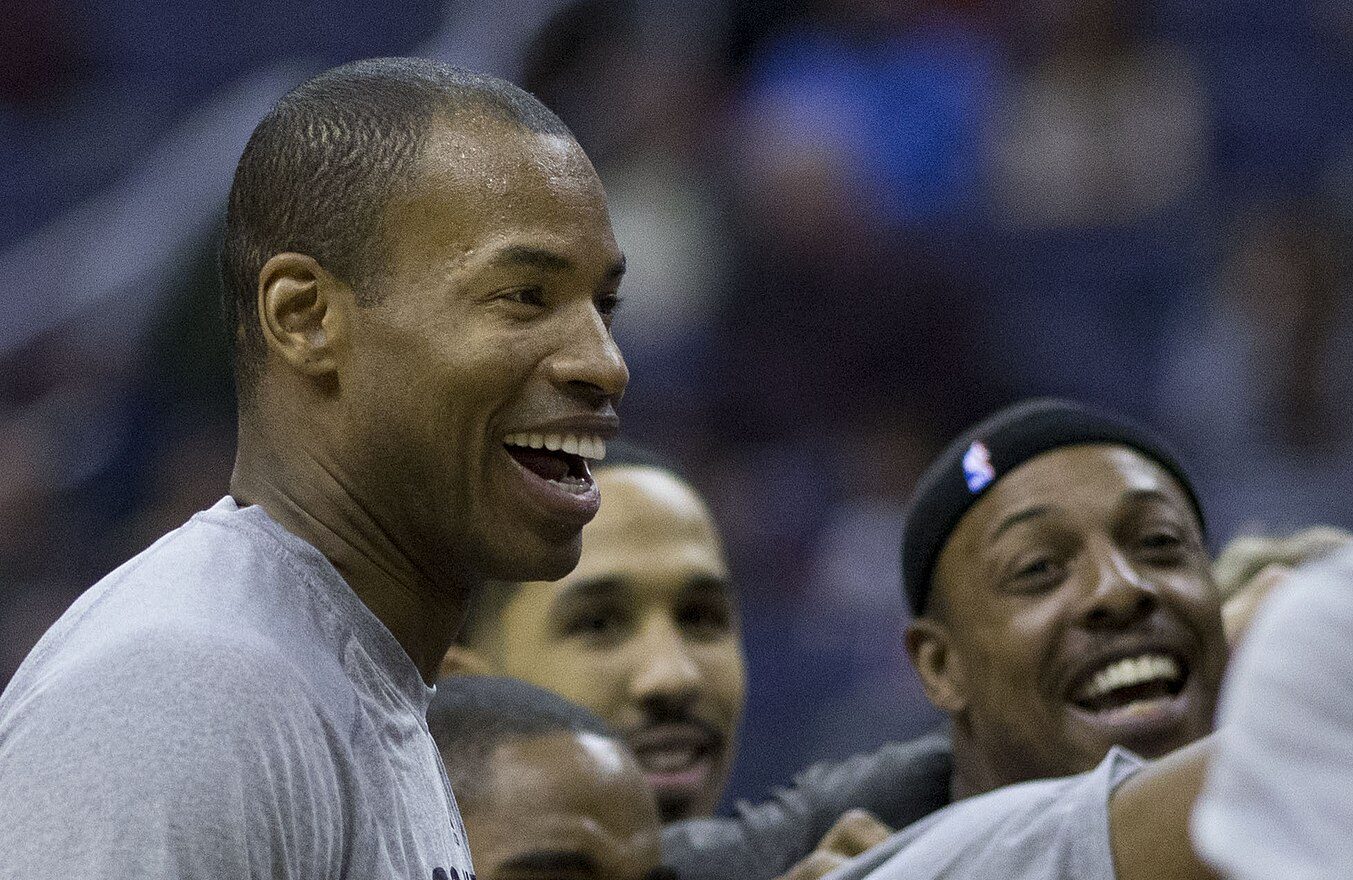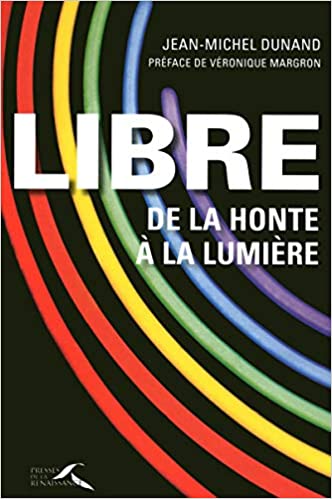I was sad to read the news that Sports Illustrated is heavily downsizing their staff and operations, which means the once illustrious honor of landing on its print cover no longer carries the same significance.
The magazine has produced an immense number of iconic covers: the wordless image of the 1980 U.S. men’s hockey team embracing after pulling off the greatest upset in sports history, a shot of a high school-aged LeBron James imposed with the prophetic phrase “The Chosen One,” Brandi Chastain’s unforgettable celebration after winning the 1999 Women’s World Cup. Some of the most momentous scenes and figures in sports history have landed on the S.I. cover.
But in May 2013, one issue of Sports Illustrated set out to change the world forever, drawing a record number of viewers to its website at the time of its publication. On its cover, NBA veteran Jason Collins smiles at the camera in plainclothes, with three massive words to his left: “The Gay Athlete.”
Since Collins cracked the door in 2013 and Nassib pushed it open even further, no professional athletes in America’s Big Four sports leagues have come out. Why not?
“I didn’t set out to be the first gay athlete in a major American team sport. But since I am, I’m happy to start the conversation,” read a pull quote.
This was massive news. As Collins said in the above quote, there had never been an active LGBTQ player in the history of the NBA, the NFL, the NHL or the MLB, otherwise known as North America’s “Big Four” sports leagues.
Collins’s announcement was forecasted as a path for other Big Four athletes to come out, as pro sports represented the “final frontier” for people to feel comfortable coming out. Surely, his bravery inspired a wave of other Big Four athletes to own their sexuality, and the acceptance of male LGBTQ professional athletes became widespread, right?
Since Jason Collins, here is a comprehensive list of Big Four athletes who have come out: Carl Nassib, the former Las Vegas Raiders defensive end. End of list.
Since Collins cracked the door in 2013 and Nassib pushed it open even further, no professional athletes in America’s Big Four sports leagues have come out. Why not?
The pre-existence of LGBTQ athletes
Let’s eliminate some possibilities. It’s not because homophobia is rampant amongst high school and college sports, instilling fear about coming out in LGBTQ athletes from a young age.
Outsports, the foremost publication on LGBTQ developments in sports, published a study in 2021 that claimed “more than 95% of the [high school and college] athletes surveyed said their teammates’ responses to them coming out were overall ‘neutral’ to ‘perfect.’” This leaves a small percentage of athletes who, as adolescents, had negative experiences coming out while playing team sports.
Buzinski attributes the gap between out male and female athletes to the “cult of masculinity in locker rooms” that permeates the mood amongst male teammates.
Jim Buzinski, a founder of Outsports, said that high school and collegiate athletes (as opposed to professional athletes) feel more comfortable coming out because adolescent players likely don’t need to worry about losing out on career opportunities because of their sexuality.
“I think when you hit the pro level, you’re competing against everyone for a really small number of jobs,” said Buzinski in an interview with Outreach. “I think the idea, at least we’ve had people tell us, is that when professional teams are picking between person X and person Y [to make a team], one person being openly gay may cause a problem.”
Nor is it because other professional American sports leagues have no active LGBTQ athletes either. As Outsports noted in 2022, roughly one in five players in the WNBA identify as LGBTQ and are publicly out. The N.W.S.L., the premier women’s soccer league in the United States, also has an extensive number of active LGBTQ players, and U.S. Women’s National Team legends Megan Rapinoe and Abby Wambach helped to pave the way for LGBTQ representation in women’s soccer.
At the Tokyo Olympics in 2021, Outsports reported that there would be 18 out male athletes competing on the biggest athletics stage in the world, across diving, equestrian, crew, swimming, taekwondo, trampoline, volleyball and track and field.
Buzinski was quick to note that the discrepancy between out male and female athletes likely has much to do with the fact that “lesbian and bi women athletes have been much more accommodated and accepted to the point where it’s almost not a story.”
Additionally, Buzinski attributes the gap between out male and female athletes to the “cult of masculinity in locker rooms” that permeates the mood amongst male teammates in professional sports.
Maybe one reason for the lack of publicly out Big Four athletes is that media speculation regarding all these athletes’ sexualities feels like a 17th-century witch hunt.
Could it be that men’s basketball, hockey, baseball and football are simply such heteronormative, testosterone-filled affairs that no players in these leagues have LGBTQ-identifying male athletes? I don’t buy it.
The danger of prying into athletes’ sexualities
Maybe one reason for the lack of publicly out Big Four athletes is that media speculation regarding all these athletes’ sexualities feels like a 17th-century witch hunt.
Troy Aikman, the legendary Super-Bowl-winning quarterback and broadcaster, was the subject of a bizarre rumor partiality circulated in Hell-Bent, the pundit Skip Bayless’ biography of the 1990s Dallas Cowboys. The rumor that Aikman was gay apparently began because he didn’t keep a woman in his company all the time, something supposedly out of character for an athlete of his caliber.
“How can I fight this? Am I supposed to keep a girl around even if I don’t care anything about her, just so I can keep everybody off my back?” Aikman asked about the baseless claims.
Then there was the abrasive peering into the private life of the New York Mets catcher Mike Piazza, who held a press conference to dispel buzz that he was gay. Media rumors had it that Piazza’s lifestyle was so hetero, it must have all been a front that he was actually gay… because he was roommates with teammate Eric Karros while playing in Los Angeles.
“I found it hugely insulting that people believed I’d go so far out of my way…to act out a lifestyle that would amount to a charade,” Piazza said in his autobiography. (Perhaps selfishly, if I can draw one positive to come from this incident, it’s the satirical yet beautiful Belle and Sebastian song, “Piazza, New York Catcher.”)
This sort of prying into the life of Big Four athletes could only negatively influence players who considered coming out.
The precedent these events set was dangerous. Big Four athletes can’t win—if they don’t hang around with women constantly, they must be gay—and if they seem to be as straight as an arrow, it must be an act. How must players who are actually gay process this information?
This sort of prying into the life of Big Four athletes could only negatively influence players who considered coming out. The behavior exhibited by Bayless and the New York media must stretch back for years, as Big Four athletes such as former Los Angeles Dodger Glenn Burke, who played in the 1970s, waited until after he retired to publicly reveal he was gay.
An athlete the media can learn from
It is not the case that the Big Four leagues have never accepted an unconventional superstar before. That would be Dennis Rodman.
Rodman, while identifying as straight, owned his wildly eccentric personality more than any player in NBA history, all while being a staunch ally of the LGBTQ community and frequenting gay nightclubs.
Rodman was an integral force (alongside Michael Jordan and Scottie Pippen) in the Chicago Bulls’ dynasty of the 1990s, racking up three rings and multiple All-Star nods while dyeing his hair with multiple colors and flashy patterns.
Professional sports leagues have done it before: They’ve let players be themselves. As the legendary basketball coach Phil Jackson said of Rodman: “[Dennis is] extremely individualistic. He believes in his own individual nature. He likes to have freedom and the expression that he has. We think that’s O.K. as long as it stays within the team confines of playing ball together.”
Professional sports leagues have done it before: They’ve let players be themselves.
Take it from Rodman himself. He’s of the opinion that 10 to 20 percent of NBA players are gay. “Who cares? You know, as long as he play and perform, does it matter?” he said.
How Catholics can help LGBTQ athletes feel welcome
Even when attitudes towards LGBTQ folks in general grew to be more accepting in the 21st century, and famed NBA faces like Kobe Bryant were quick to support Collins, roadblocks still remained—especially for Christian athletes.
Collins, a Christian himself, faced criticism from ESPN’s Chris Broussard, who claimed that Collins’s sexuality was “walking in open rebellion to God and to Jesus Christ.”
LGBTQ athletes already must feel immense pressure from secular forces to repress who they are. As Pope Francis noted with the Vatican declaration “Fiducia Supplicans,” the dignity of LGBTQ people—including gay athletes—is something that fellow Christians should be lifting up, not tearing down.
Collins took Broussard’s comments in stride. “This is all about tolerance and acceptance. And America is the best country in the world because we’re all entitled to our opinions and beliefs, but we don’t have to agree. And obviously I don’t agree with his statement,” Collins said. But it is still up to us to change the narrative that LGBTQ athletes cannot express their sexuality and their faith simultaneously.
It is still up to us to change the narrative that LGBTQ athletes cannot express their sexuality and their faith simultaneously.
“I think the idea would be that God will judge everybody based on whatever criteria God uses, meaning it’s not going to be like what some ESPN analyst says God is going to judge them on,” Buzinski said.
“I’ve worked with a lot of athletes that were very religious with their coming out stories. And that is something they wrestle with. They’ll hear it from their pastor, as a kid, sermonizing against same-sex marriage, and it really does … drive a lot of people away from religion,” he continued.
The purpose of this article is not to speculate about which athletes in the Big Four identify as LGBTQ. That’s none of my business—or anyone else’s. But I hope that in addition to pre-existing efforts by Big Four leagues, one day, locker room culture, media speculation and “holier than thou” attitudes can subside to usher in a new era of welcoming and protecting of LGBTQ athletes, who deserve every right to be unapologetically themselves in their field of play.



